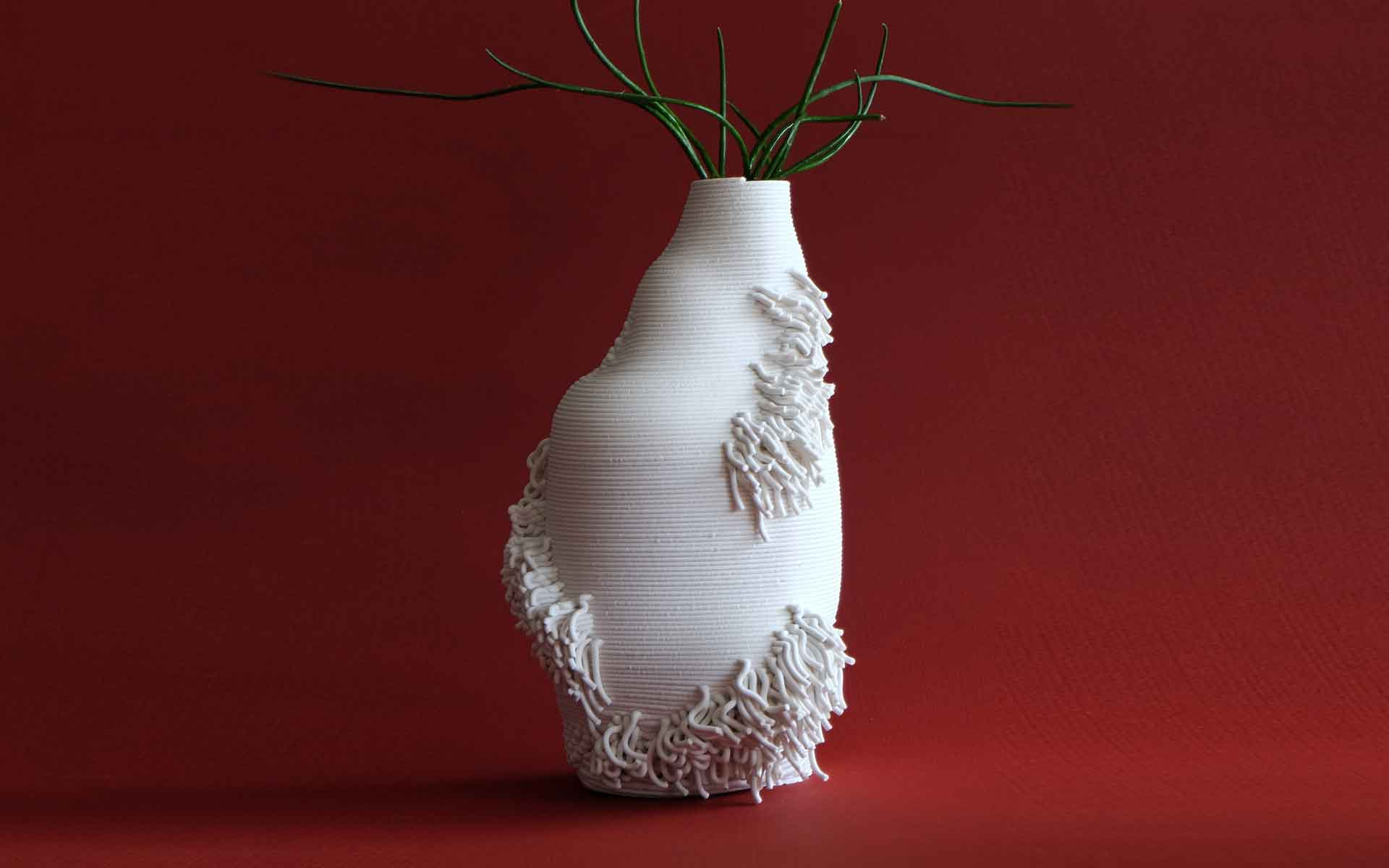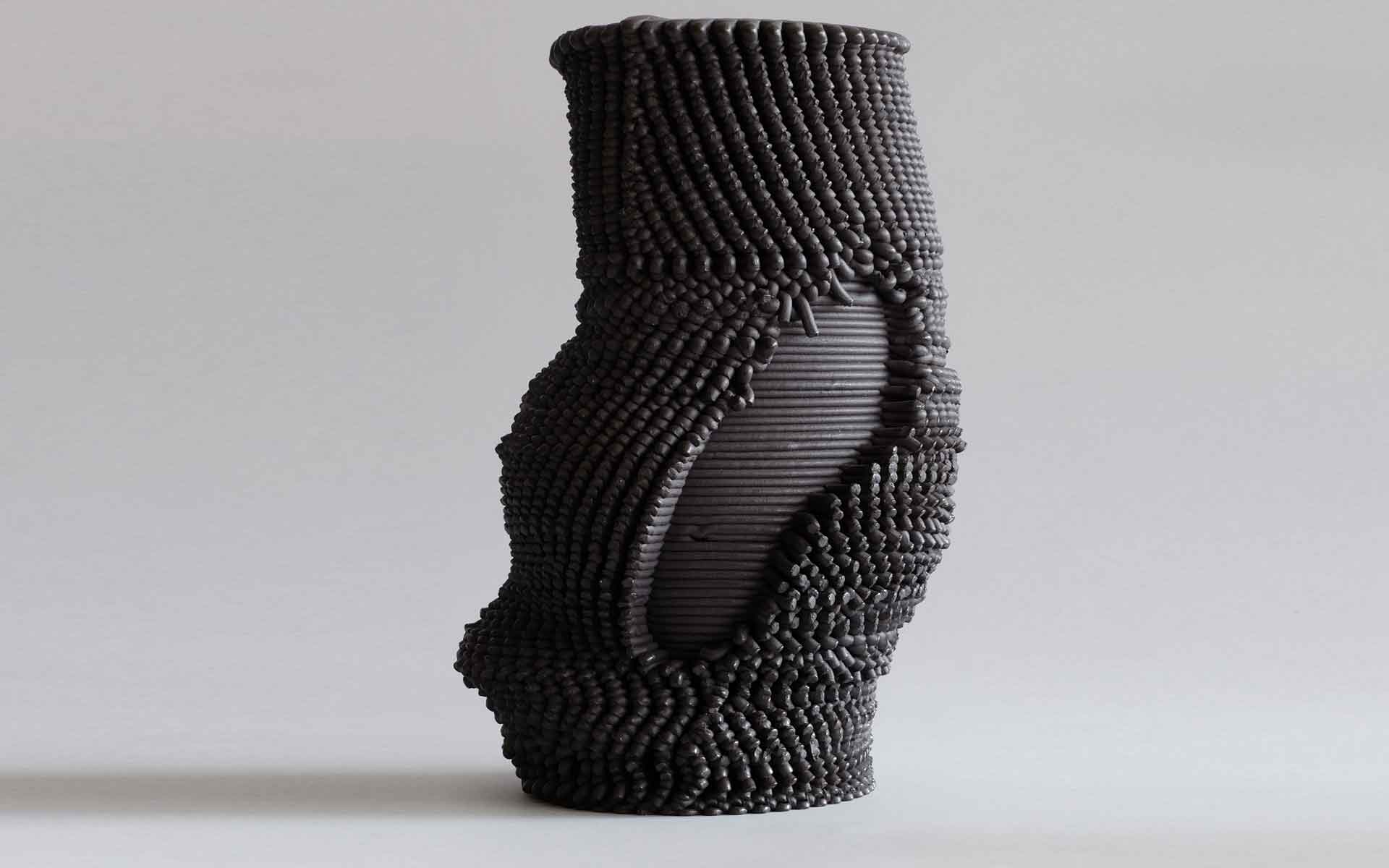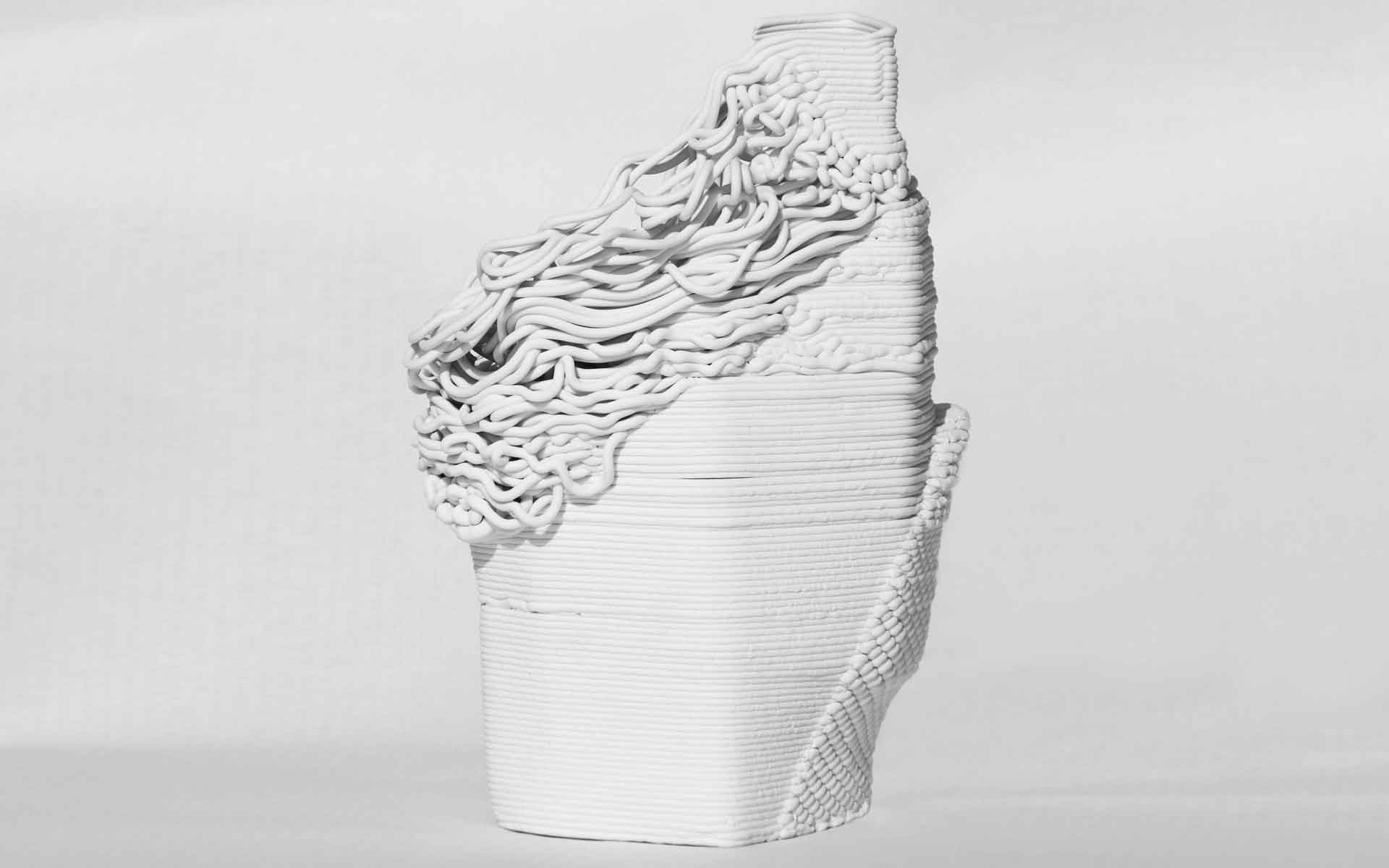
18 Jun 3D Printed Ceramics
3D printed ceramics create a beautiful synergy between past and future, hand-made vs the machine, spontaneity and control. Within the last few years, 3D printing has come back into fashion, creating innovative solutions within science, art, architecture, medicine… 137° Ceramic Art Studio interviews the wonderful team, Raul, Jude and Valeria at Coudre Studio, our neighbouring creatives in the Poblenou district.
1. What can you tell us about your story with 3D printing and how did you become interested in it?
From 2013 to 2017, Raul started working in the development and sharing of the Reprap project (the first 3D printers) from his own project ilaro.org, during his residency at the visual arts production centre Hangar in Barcelona.
Jude first met Raul as his student in college, where Raul was teaching classes on computation applied to art and design. He became interested in 3D printing through participating in several projects with Raul during his college internship, before working as his partner when the Coudre project was born. Valeria started collaborating with Raul in the production of digital fabrication projects from ilaro.org. She later joined him and Jude in the foundation of the Coudre project, which is when we started a more purposeful research and production of 3D printed ceramic pieces.
2. What is the process of creating a functional item or sculpture using 3D printing?
It really depends on the material being used. The same shape could be entirely functional in plastic but not in ceramics or vice versa, but not only because of the more obvious properties of the finished piece such as impermeability; the printing process is very reliant on the weight, plasticity and stickiness of the material to hold a structure together.
Plastic is so light that you can sometimes extrude filaments that will run a long distance between two support points without collapsing, which would be nearly impossible to achieve with clay, since it’s got more weight to it. To be able to print shapes with protruding parts, overhangs or really acute angles, what one does when working with plastic is printing supports below these overhangs. These supports are low density frames instead of being solid shapes, so that they’re strong enough to support the weight of the plastic overhangs but weak enough to be removed by hand when the print is finished.
However, you cannot do that with clay! It would be really hard to remove supports without deforming or breaking the rest of the piece, especially in our textured pieces. So printing really starts with design; not every shape can be printed. You might need to think about printing it in pieces and rejoining them, or rotating it in an unconventional manner to get rid of overhangs. We like to use the fall of the clay as a design feature instead of a limitation, though.
3. I, like many others, have become mesmerised by the beauty and precision of 3D printed ceramics, why do you think these ceramics have such an emotional effect on people?
We are naturally interested in shapes and patterns that are imperfect but ordered: spirals in pinecones, the symmetry of flowers, termite clay mounds, aggregated structures such as stalagmites or dendritic growths… Printing is precise enough to reproduce a general shape but, especially with clay, there is enough unpredictability in the material that not two pieces printed are the exact same. We think our eyes can read that on the pieces, that they haven’t been shaped by human — and then maybe wonder what strange force of nature might have generated them. It certainly happens to us, even though we have seen them being printed.
4. There are some, shall we say ‘purist’, ceramicists out there who would label 3D printing as cheating and inauthentic, what is your response to this?
We think it would be a rational response to an otherwise inaccurate understanding of how these machines really work, or what our intention really is. Firstly, these 3D printing machines will not do the entire work for you, just like an electrical potter’s wheel will not, despite also being a machine (and we have used both!). Similarly to the kiln or the wheel, these are machines that are not made to imitate or surpass human abilities, but rather serve as augmentations of it. The wheel enabled the creation of new types and styles of ceramicware, essentially different from the ones produced via other pottery techniques, but not better or worse.
Therefore, our intention is not to imitate what traditional ceramicists have been producing, but rather find new ways to work with this material. We only print pieces that are impossible to make by traditional means, and there are plenty of things you can achieve better by traditional means than by printing. Traditional ceramicists don’t need to worry more about printers than about industrial production of ceramicware; in fact, producing ceramicware at an industrial scale via 3D printers would be completely impractical. That’s why we know our way of making is artisanry: our slow, explorative workflow is the same as in any other ceramic workshop.
Secondly, we think people forget that in order to make these machines run, a lot of work and trial-and-error is necessary. There is a lot of knowledge and technique in code and machine-making, just as in glaze making, slip casting or clay wedging. There can be artisanry in the digital plane. Artisanry is a way of working, not necessarily related to the materials.
It has taken us years of building several machines and experimenting with code to achieve our results. We have been lucky that the majority of traditional ceramicists, even those many years on the trade, have acknowledged this work for what it is.
Richard Sennett’s book “The Craftsman”, is an interesting read for anyone looking to delve into the importance of craftsmanship and tools.
5. No machine is perfect, what are the biggest challenges and issues that you face when working with 3D printers?
Trouble-shooting can be complex, because sometimes we are not sure if problems are being caused by the material, the hardware or the software. Since we build our machines ourselves, they are way cheaper but also more prone to error or breakage. Fortunately, that also means we know how to easily repair and change them.
It is also tricky to get the clay consistency right for printing, even when measuring the ingredients. We need to mix the clay ourselves because no one will sell clay at the consistency we need for printing. We have a very limited selection of powdered clay to work with, since most commercial powder clays are formulated for slip casting so that the clay particles don’t stick very much to each other— which is precisely what we need. It is tricky to load the clay into the tubes for printing without getting air bubbles in, and once the clay is in there we have a limited time before it is too dry to be extruded easily. We are looking into getting a pug mill for clay mixing and also finishing a new, bigger printer that could extrude drier clay by using a powerful motor instead of compressed air, so that we can focus more on the pieces instead of on monotonous work.
6. What skills and/or experience does one need to start creating 3D printed ceramics?
Ceramics and 3D printing are both extensive fields of knowledge on their own, and in this case, it is not enough to only know about one or the other. That makes things a little bit more difficult. There is plenty of free online documentation on both individually and also on clay 3D printing specifically, but a lot of patience is needed to keep motivated. Things rarely work out the first, the second or the tenth time, so we guess one would really just need to be stubborn enough to push through it. Starting from a knowledge of either ceramics or plastic 3D printers would definitely help, but it is not required if one knows how to search for knowledge online.
Jonathan Keep has got extensive and free online documentation on 3D printing ceramics
up on his site.
The 137° Ceramic Art studio offers multiple courses and workshops to gain experience
and skills in the art of ceramic making. Check out our online calendar for more information.
7. 3D printing is proving to be very powerful in the world of design, what innovations do you anticipate to see within the next 5 years or so?
We hope to see more people using noble materials such as ceramics or recycled, recyclable or biodegradable pastes. We would also like to see advancements in the energy efficiency of 3D printing, since the fact that it’s open source and decentralized doesn’t really mean it is better in all regards. Ceramics should be less dangerous to dispose of than plastic, and printing with it is also faster, therefore needing to keep the machine on for less time. But the peripheral machines that work to extrude and cook the clay really draw a lot of power. We would like to see, and work on, smarter ways to make
3D printed ceramics as energy-efficient as traditional ceramics.
On this subject, we think that works like Markus Kayser’s Solar Sinter are really smart: the printer is surrounded by free energy and material. Things like his Solar Cutter, which still produce crude results, is where we would like to see more refinement and expansion.
Written by Freya Saleh




